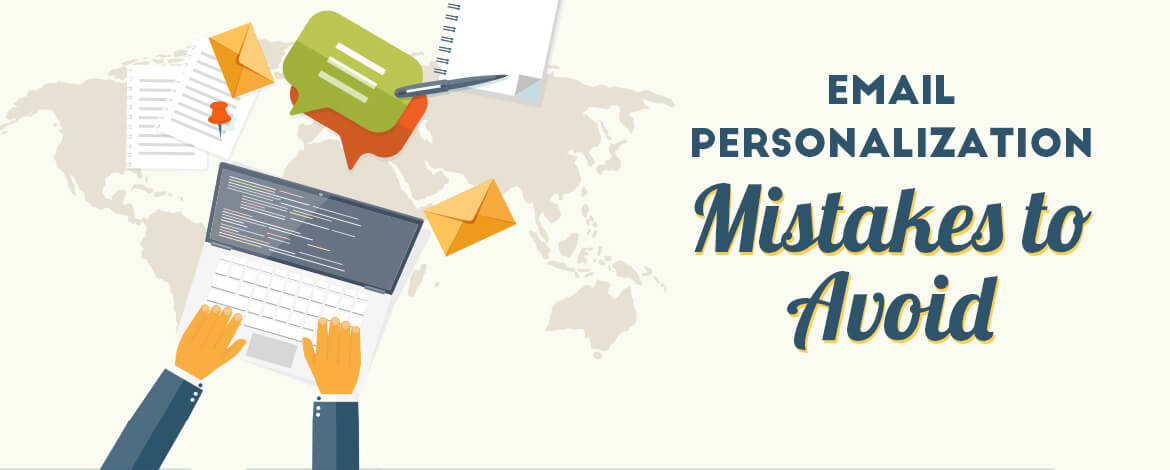You might have come across some (or all) of the following in your emails:
- Email starting with Hello [FirstName], Hello [FIRST_NAME LAST_NAME] or simply Hi
- Emails with dog food suggestions when you don’t own a dog
- Offers and discounts on Menswear while you signed up for Women’s fashion
The good thing here is that these brands are using personalization! But the worst thing is, they are not using it accurately! Personalization, when done wrong, can cost you your leads and hamper your brand image.
We’re living in an era of personalization! Personalizing your email campaigns is a great way to build trust amongst your subscribers and to shape long-term relationships with your customers.
It is better to not use personalization at all than using it wrong.
We have collated 6 mistakes email marketers often make, that must be avoided:
1. Sending to an incorrect segment
Segmentation is an important part of the email campaign management process. Your customers and subscribers have diverse interests and they prefer only relevant and targeted content. An email that is relevant to one such segment may not be of any use to another. It is, therefore, necessary that you double check the segment you are targeting with a particular email.
2. Addressing with the wrong first name
First name personalization is the most basic form of personalization. Nobody likes to be addressed incorrectly. And since first name personalization has been around for a while, your subscribers expect their name to be there in the email. If you are using this tactic of email personalization, make sure you use the correct first name and avoid assigning a default value if you do not know their name.
3. Irrelevant product recommendations
In-email product recommendations are good to re-engage customers and upsell, especially for ecommerce businesses. Marketers often consider a customer’s previous shopping history and browsing history as the basis to create tailored emails. But sometimes, the customers’ search data is mistaken as their intent to buy. Monitor the most frequent searches of your customers and then send relevant product recommendations. Avoid sending the same recommendations to all or sending recommendations based on less frequent searches.
4. Mixing up genders
It is a good practice to ask the subscriber’s gender during sign up and to segment them accordingly. If you are a fashion brand, you may want to send suggestions from the men’s collection to the male members on your list or to all those who opted for receiving updates about the men’s collection. Send tailored messages as per the segments to avoid irrelevancy.
5. Wrong sending time
No matter how good your email is, if it is not sent at the right time, there are huge chances of it remaining unopened or directly landing into your subscribers’ trash folder. And all this just because it arrived at the wrong time. To get the emails opened and read, make sure to send your email at a time that works for your subscribers, when they are most likely to open it. Avoid mass emailing at a random time; instead, optimize email send time for each individual subscriber in your list.
6. Mundane event-based emails
Sending emails on birthdays and other important events is very common these days. When a subscriber opens an email that reads “Happy Birthday” and it offers nothing special, it can be a major let-down. Make them feel special by giving exciting gifts in the form of offers, free shipping, or discounts. Moreover, when it comes to sending event-based emails, double check the dates.
Wrapping Up:
There are several ways of showing your customers that you know, you care, and they matter! Utilize your data in the right way and at the right time to build the brand-subscriber email marketing relationship.
How we can HELP?
Want us to build customized emails for your business? We have all the expertise and experience in designing and coding email templates and newsletters for businesses across industries. Write to us for your requirements.
